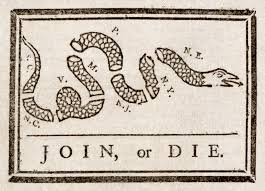Whitemarsh: Part 1 of 8

Continental Army soldiers 1782.
H. Charles McBarron, Jr.
United States Army. Prints & Posters
The American Soldier series
For the average soldier, Whitemarsh was a story of waiting. During the six weeks the Continental army encamped there, the Americans
- waited for the British to attack
- waited to see if Washington would order an attack on Philadelphia
- waited to get paid
- waited to find out where winter quarters might be
- waited for their enlistments to run out
- waited for food and shoes
- waited for something to happen.
For George Washington, though, plenty was happening. There was...
- a court-martial which hinged on the sobriety of one of his generals
- an angry salvo of letters on the subject of prisoner exchange with Lord Howe
- a demand of his attention to respond to expiring enlistments
- the increasingly problematic level of desertions
- the gathering of two war councils on the subject of attacking Philadelphia
- a three-day skirmish which left hundreds of Americans and British dead and wounded.
All the time the Americans camped at Whitemarsh, the locals suffered. About 20 families on the outskirts of Philadelphia were left homeless after the British burned their houses in retaliation for harboring Whigs. The poor in Philadelphia suffered severely as inflation raged and the price of food skyrocketed. An egg was a luxury item.

Lydia Darragh giving warning
from an engraving in Godey's Lady's Book, 1845
And a Quaker woman, Lydia Darragh — at the risk of her life — walked through snow to deliver a vital message to George Washington. In the process she outwitted a British spymaster while saving countless Americans.
Background
On October 29, George Washington and the Continental army remained in a holding pattern. After the American setback at the Battle of Germantown on the 4th, Washington had spent the next several weeks watching the British in Philadelphia. Now the Americans were nearing the end of their second week encamped in Whitpain Township, 15 miles north of occupied Philadelphia and two miles from Whitemarsh.
Wanting resolve, Washington called a council of war.
Council of War
Here is the situation the war council had to take into consideration: The British occupied Philadelphia. The Americans controlled the Delaware River — the all-important supply channel into the capital. Howe, and a good portion of his army and navy, were desperately trying to capture the American-held forts along the Delaware. A teeny American force and a tiny state navy, dwarfed in numbers and firepower, were desperately trying to hold the British off.
At Whitemarsh, the Continental Army under Washington numbered about 15,000, including militia. These men were needed here because Congress had asked Washington to prevent British forays into the countryside surrounding Philadelphia. Washington also needed to prevent a British attack toward York, where Congress was now meeting, as well as the supply cities of Reading and Lancaster.Nine Courses Considered
The American commander in chief enumerated nine possible courses of action. He listened attentively without weighing in, while his commanders debated possible strategies. The option most vigorously discussed was an attack on Philadelphia. In the end, this was considered unfeasible, because the British had erected impassable defenses around the city.
Instead, the Council recommended moving to a safer series of hills around Whitemarsh where the army could continue to watch Howe and offer protection to the countryside. The council further suggested detaching any troops that could be spared to the Delaware forts.
Washington complied with the Council's recommendations, and, on November 2, moved to Whitemarsh, which was about 13 miles northwest of Philadelphia. The army immediately began building redoubts and connecting works on three principal elevations in the area: Militia Hill, Fort Hill, and Camp Hill.



